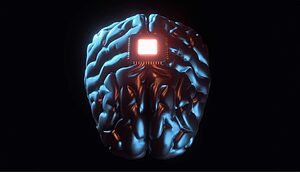Nerulink Implant to Human Brain

Neuralink and its N1 Implant is accurate. Neuralink, founded by Elon Musk, aims to develop brain-machine interface technology to address various medical conditions and enhance human capabilities. The N1 Implant is designed to record and transmit brain signals wirelessly, with 1024 electrodes distributed across 64 threads.

The implant’s thin threads are intended to be implanted in a part of the brain associated with movement intention. The recorded neural activity is then transmitted wirelessly to an app, which decodes the data stream into actions and intents. The small battery powering the implant is charged wirelessly using a compact, inductive charger.
Neuralink’s mission involves creating a generalized brain interface to address unmet medical needs. One of their initial products, named “Telepathy,” is designed to assist individuals with paralysis in controlling technological devices and potentially restoring vision.
The significance of Neuralink’s N1 Implant lies in its potential to advance brain-computer interface technology, allowing for direct communication between the brain and external devices based on thought alone. This technology holds promise not only for medical applications but also for expanding human capabilities in various fields.

Neuralink’s goals and intentions for its brain-computer interface (BCI) technology. Neuralink aims to assist people with paralysis in controlling technological devices, such as computer cursors or keyboards, with the potential for broader applications in restoring full body movement and other functions in the future.
It’s important to note that developments in medical technology and research can progress rapidly, and specific details about ongoing studies, institutional review board approvals, and participant enrollment may not be publicly disclosed due to privacy, competitive, or regulatory reasons. If there have been updates or changes in Neuralink’s plans or disclosures since my last knowledge update in January 2022, I recommend checking Neuralink’s official website or reliable news sources for the latest information.
If interested individuals with quadriplegia due to cervical spinal cord injury or amyotrophic lateral sclerosis (ALS) can sign up for the patient registry on Neuralink’s website, it suggests that the company is actively engaging with potential participants for their studies or clinical trials. Participation in such trials is typically subject to eligibility criteria and the approval process.
CHARM-retirement.com




hi
You have observed very interesting details! ps decent website.Raise blog range